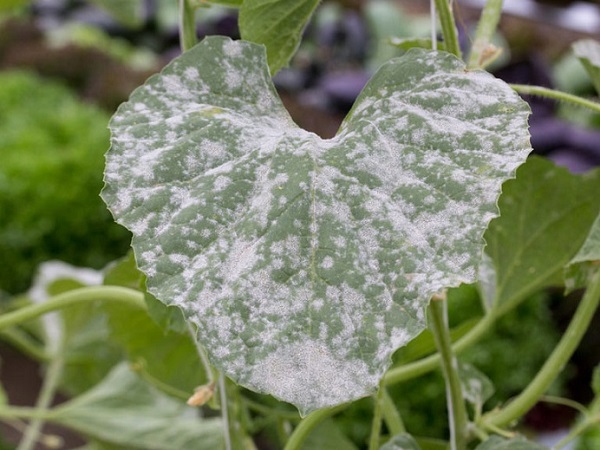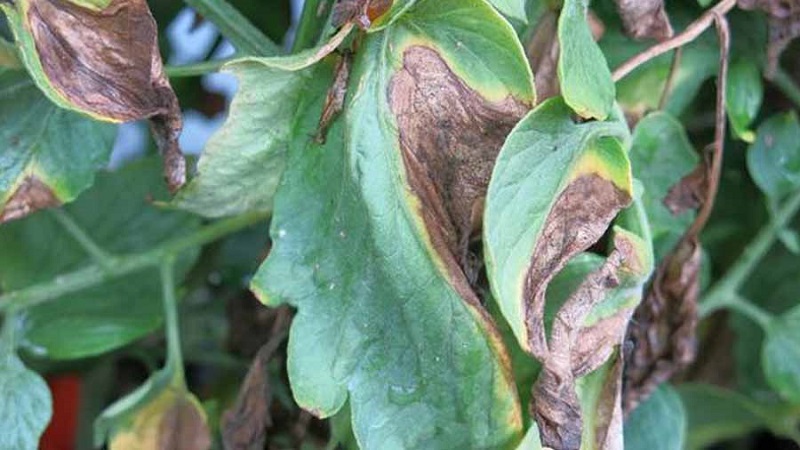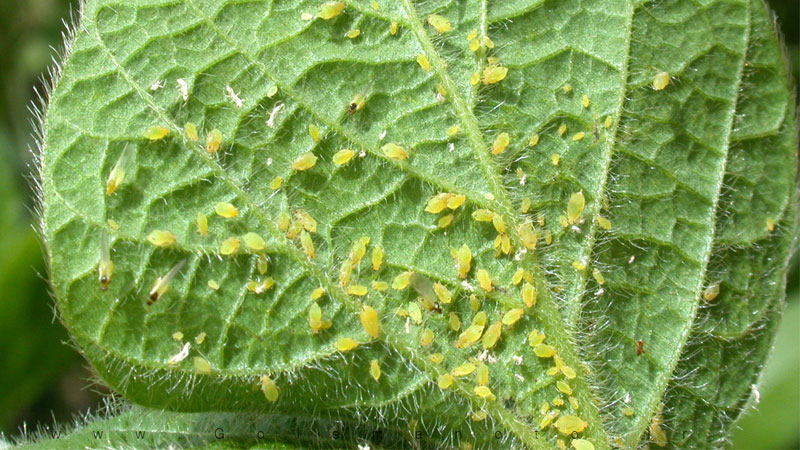
The Most Common Leaf Diseases & Problems + Ways of Control
Leaf diseases in plants and trees pose significant challenges for gardeners and farmers. These diseases not only affect the appearance of plants but can also severely impact growth, fruit production, and overall plant health. Various factors, including nutrient deficiencies, fungi, bacteria, and viruses, contribute to the development of these diseases.
Recognizing the symptoms and signs of leaf diseases enables gardeners to act promptly and prevent their spread. This article explores the most common leaf diseases affecting plants and trees and provides effective strategies for their control and prevention.
Factors Contributing to Leaf Diseases in Plants and Trees
Leaf diseases can arise from multiple sources. Understanding these causes is essential before delving into specific disease types.
- Fungi: Many leaf diseases originate from fungi, which may reside in soil or on leaves, feeding on the plant.
- Bacteria: Bacteria can also cause leaf diseases, typically entering plants through wounds or pest damage, leading to infections.
- Viruses: Viral diseases are often transmitted by pests like aphids or whiteflies, causing changes in leaf color, shape, or size.
- Environmental Factors: Conditions such as high humidity, extreme temperatures, insufficient light, or improper watering can trigger leaf diseases.
- Nutrient Deficiencies: A lack of essential nutrients or an imbalance can cause yellowing and leaf drop, making plants more susceptible to diseases.
- Pests: Pests like aphids, whiteflies, and mites can damage leaves, creating entry points for fungi and bacteria, exacerbating disease risks.

Common Leaf Diseases in Plants and Trees
Leaf diseases stem from diverse causes, but timely identification and appropriate control measures can minimize damage. Due to the wide variety of fungi, viruses, and plant-specific disease manifestations, we cannot cover every leaf disease. However, this section highlights some of the most prevalent ones.
Leaf Rot
Leaf rot, caused by fungi or bacteria, appears as brown or black spots on leaves. Fungicides are commonly used for treatment. To prevent leaf rot, avoid excessive moisture and practice gentle watering. If the disease occurs, remove and burn affected leaves at a safe distance.
Powdery Mildew
Powdery mildew, a fungal disease, presents as a white coating on leaves. Increasing air circulation and light exposure around plants can prevent it. If detected, apply specific fungicides and remove infected leaves.
Nitrogen Deficiency

Nitrogen deficiency is a leading cause of leaf issues. When nitrogen is scarce, older (lower) leaves turn yellow as the plant reallocates nitrogen to survive. These leaves may then brown and become brittle. To prevent this, apply nitrogen-rich fertilizers during early growth stages.
Phosphorus Deficiency
Phosphorus deficiency manifests as discoloration in lower leaves, often turning them dark green or bluish. Over time, leaves may curl downward. Supplying adequate phosphorus through fertilizers can prevent this issue.
Greasy Spot
Greasy spot, caused by bacteria or fungi, appears as yellow or brown spots with oily margins. Control measures include removing and burning affected leaves and applying bactericides.
Viral Diseases
Viral diseases cause leaf discoloration and deformity, often with severe consequences. Using resistant seedlings and controlling virus-carrying pests are key to managing these diseases.
Leaf Drop
Leaf drop can result from improper watering or fungal infections. To address this, regulate watering, reduce excess moisture, and treat fungal infections promptly.
Bacterial Soft Rot
This disease causes stem and leaf decay, accompanied by a foul odor. Reducing humidity, disinfecting soil and tools, and using bactericides are effective control methods.
Verticillium Wilt

Verticillium wilt leads to wilting and drooping leaves, worsening in hot weather. Crop rotation, soil disinfection, and planting resistant varieties help manage this disease.
White Powdery Mildew
White powdery mildew, a fungal infection, appears as white powdery spots on leaves, potentially spreading to stems and flowers. It reduces photosynthesis, stunting growth and lowering fruit quality. High humidity increases its likelihood. To prevent it, reduce moisture and ensure proper ventilation. Natural solutions or fungicides can treat it.
Aphids
Aphids, small pests in various colors, gather on the undersides of leaves, feeding on plant sap. They stunt leaf growth and secrete a sticky substance that attracts soot and debris. Controlling aphid infestations prevents further damage.
Heat Stress
Excessive heat causes rapid soil moisture evaporation, prompting leaves to curl toward the soil to retain water. This results in a drooping, cup-shaped appearance. Proper ventilation and watering mitigate this issue.
Overwatering
Overwatering is a common cause of plant decline. It leads to curled leaves, browned stems, and softened plant tissue. To prevent this, allow soil to dry completely between waterings.
Controlling Fungal, Viral, and Bacterial Diseases

Fungi, bacteria, and viruses each cause distinct symptoms, and careful observation can help identify the culprit.
- Fungal Diseases: Fungi are the primary cause of leaf diseases, marked by brown or black spots, white or gray powdery coatings, rot, leaf drop, or yellowing. Control methods include applying fungicides, improving ventilation and light, and removing and burning infected leaves.
- Viral Diseases: Symptoms include yellowing, leaf deformity, spotting, and stunted growth. Using healthy, resistant seedlings, controlling virus-carrying pests, maintaining garden hygiene, and removing infected plants are effective strategies.
- Bacterial Diseases: Watery or oily spots, yellowing, leaf drop, wilting, and rotting infections indicate bacterial diseases. Bactericides, removing and burning infected plants, maintaining garden hygiene, and avoiding overwatering help control these diseases.
The Role of Watering in Preventing Leaf Diseases
Proper watering maintains soil moisture, but overwatering creates excess humidity on leaves, fostering fungal diseases. Both under- and overwatering harm plants, as does improper watering technique. Watering in the morning allows plants to dry during the day, reducing leaf moisture and disease risk. Drip or subsurface irrigation systems minimize surface moisture, further lowering disease risks.
Soil Management to Prevent Leaf Diseases
Soil health significantly impacts plant and tree vitality. Healthy soil requires proper structure, good aeration, and sufficient nutrients. Poor or compacted soils hinder root growth and nutrient absorption, weakening plants and increasing disease susceptibility.
To identify soil deficiencies, conducting a soil test is recommended. Soil testing is typically performed in late winter by collecting samples from various parts of the soil. These samples are analyzed in a soil laboratory to determine nutrient levels. Based on the results, a precise fertilization plan is developed to address the plants’ needs.
Soil pH must be balanced, as overly acidic or alkaline soils cause nutrient deficiencies, weakening plants. If pH is outside the optimal range, amendments like sulfur fertilizers can adjust it. Sulfur also reduces soil alkalinity and controls salinity.
Ensuring adequate soil nutrients is another critical factor in maintaining the health of plants and trees. Plants and trees must be well-supplied with macronutrients, followed by micronutrients and other essential elements. Among all nutrients, nitrogen has the greatest impact on leaf growth and health. To meet plants’ sulfur and nitrogen needs, ammonium sulfate fertilizer can be used.
Conclusion
Leaf diseases in plants and trees are complex but manageable with proper knowledge and care. By understanding their causes—fungi, bacteria, viruses, environmental factors, or nutrient deficiencies—gardeners can implement effective prevention and control strategies. Regular monitoring, timely interventions, and maintaining optimal soil and watering conditions are key to keeping plants healthy and productive.
